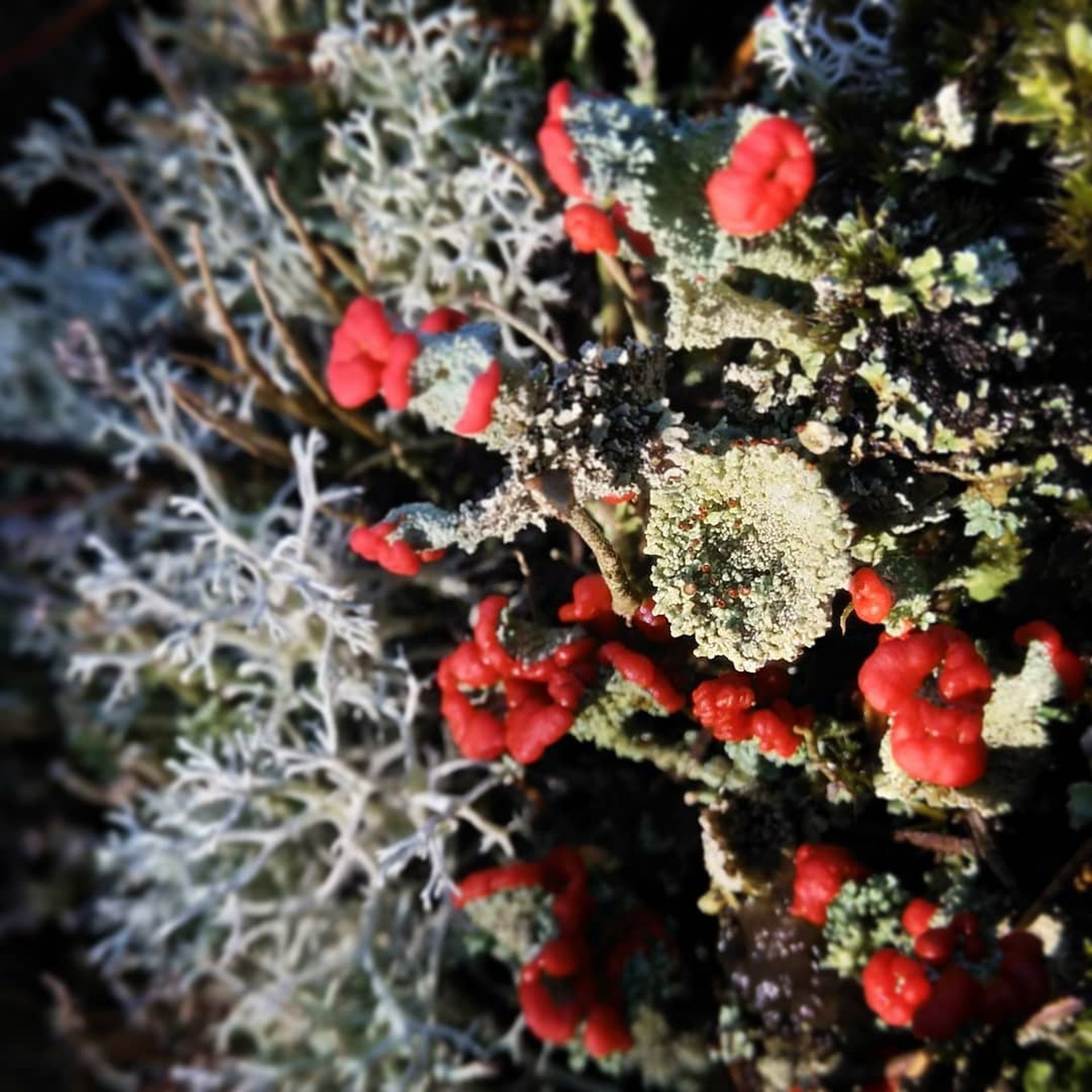Moss or lichen? What's the difference?
Strolling through the woods, one might wonder what it actually is that’s covering the ground almost everywhere. These living beings can be found in all kind of habitats, from the driest and sun-exposed rocks until the swampy wetlands. Their color and structure show a variety that’s revealed to everyone who’s willing to stop and take a closer look. But what is it, that I am talking about here? What are those living entities? Are they all of the same family, just different species? Not at all! There’s a fundamental difference between mosses and lichens.
The confusion becomes perfect through the existence of unclear names. Perfect examples are the oak moss, Evernia prunastri, or the reindeer moss, Cladonia rangiferina, which actually are lichens. Another example can be found in the Swedish language where the star-tipped cup lichen, Cladonia stellaris, is called vitmossa, so to say white moss.
Both mosses and lichens can occupy similar habitats. However, their biology is of fundamental difference! Mosses are plants, more precisely non-vascular plants. This means that they don’t have vascular tissue to distribute water and minerals through the plant. They however have cells containing chlorophyll and are therefore able to do photosynthesis, which characterizes them as plants in the first place. Unlike many other plants, mosses do not have flowers or seeds. They reproduce via spores or even through broken parts being transported to a suitable new place.
So, mosses are plants. What are lichens then? In fact, lichens are associations of fungi living in mutualistic symbiosis with algae or cyanobacteria. Mutualistic… what? Mutualistic symbiosis simply describes a relationship where both partners benefit, in opposite to parasitism, where one partner would benefit at the expense of the other. Lichens are composite organisms with the fungus determining the outer structure. The fungal filaments provide protection from drought and sunlight for the inhabiting algae or cyanobacteria. Through their ability to use sunlight for photosynthesis they provide nutrition for both themselves and the fungal partner. Cyanobacteria are even able to fix atmospheric nitrogen and can serve as a primary partner for the fungus or additional to a green alga.
Summary: Mosses are plants! Lichens are fungi who live in a mutually beneficial relationship with algae and/or cyanobacteria. Mosses and lichens are therefore fundamentally different organisms though they might look similar and cohabit in the same places.
On your next walk, keep your eyes open and you’ll find an incredible variety of both mosses and lichens that is mostly overlooked. Are you able to distinguish mosses from lichens now? Please share your experiences in the comments below.
Post sources:
- Canadian Museum of Nature: https://canadianmuseumofnature.wordpress.com/2017/11/15/moss-and-lichen-wait-whats-the-difference/
- Biology online: https://www.biologyonline.com/dictionary/mutualistic-symbiosis
- Our Journey Westward: https://ourjourneywestward.com/lichen-vs-moss/
- Evernia prunastri Wikipedia: https://de.wikipedia.org/wiki/Evernia_prunastri
- Cladonia rangiferina Wikipedia: https://en.wikipedia.org/wiki/Cladonia_rangiferina
- Cladonia Stellaris Wikipedia: https://en.wikipedia.org/wiki/Cladonia_stellaris
- Vascular Plants Wikipedia: https://en.wikipedia.org/wiki/Vascular_plant#:~:text=Vascular%20plants%20include%20the%20clubmosses,Tracheobionta%20and%20Equisetopsida%20sensu%20lato.
- Moss Wikipedia: https://en.wikipedia.org/wiki/Moss
- Plant Wikipedia: https://en.wikipedia.org/wiki/Plant#Current_definitions_of_Plantae
There are no reviews yet.
